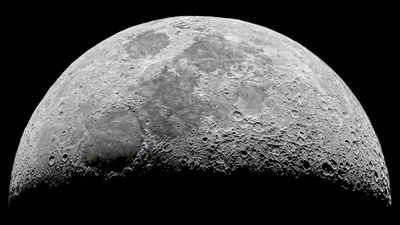- News
- World News
- US News
- 'Robotic transport system': Nasa announces plans to build first railway system on Moon
Trending
'Robotic transport system': Nasa announces plans to build first railway system on Moon
Nasa is gearing up to send astronauts back to the moon and has unveiled its blueprint for the inaugural lunar railway system, dubbed FLOAT (Flexible Levitation on a Track). Engineers at NASA's Jet Propulsion Laboratory (JPL) in California are presently spearheading the development of the FLOAT system. The project is designed to create a "robotic transport system" that will support the future lunar activities of astronauts visiting the moon

Representative image (File Photo)
NEW DELHI: Nasa is preparing to send astronauts back to the moon and has announced its plan to construct first lunar railway system, known as FLOAT (Flexible Levitation on a Track). Engineers at Nasa 's Jet Propulsion Laboratory (JPL) in California are currently developing the FLOAT system.
According to Nasa's blog post, the project is designed to create a "robotic transport system" that will support the future lunar activities of astronauts visiting the moon, the space agency stressed on the importance of this transport system for the daily functioning of a sustainable lunar base in the 2030s.
A robotics expert at Nasa 's Jet Propulsion Laboratory, Ethan Schaler said, "We want to build the first lunar railway system, which will provide reliable, autonomous, and efficient payload transport on the Moon. A durable, long-life robotic transport system will be critical to the daily operations of a sustainable lunar base in the 2030’s, as envisioned in Nasa’s Moon to Mars plan and mission concepts like the Robotic Lunar Surface Operations 2 (RLSO2).
Based on Nasa 's initial design, FLOAT will be exclusively for machines.
Nasa 's blog post read, "FLOAT will operate autonomously in the dusty, inhospitable lunar environment with minimal site preparation, and its network of tracks can be rolled-up / reconfigured over time to match evolving lunar base mission requirements."
It is worth mentioning that FLOAT will be integrated into Nasa 's Artemis program, which aims to return astronauts to the moon and reinstate human presence for the first time since 1972.
The space agency has set a target landing date of September 2026 for placing astronauts on the lunar surface.
According to Nasa's blog post, the project is designed to create a "robotic transport system" that will support the future lunar activities of astronauts visiting the moon, the space agency stressed on the importance of this transport system for the daily functioning of a sustainable lunar base in the 2030s.
A robotics expert at Nasa 's Jet Propulsion Laboratory, Ethan Schaler said, "We want to build the first lunar railway system, which will provide reliable, autonomous, and efficient payload transport on the Moon. A durable, long-life robotic transport system will be critical to the daily operations of a sustainable lunar base in the 2030’s, as envisioned in Nasa’s Moon to Mars plan and mission concepts like the Robotic Lunar Surface Operations 2 (RLSO2).
Based on Nasa 's initial design, FLOAT will be exclusively for machines.
Key features in FLOAT system
- Magnetic robots will be utilized in the FLOAT system, designed to levitate over a three-layer film track to minimize abrasion from lunar dust.
- These robots will carry carts and move at a speed of around 1.61 kilometers per hour
- The system aims to transport approximately 100 tons of material per day to and from NASA's future lunar base
- FLOAT's primary objective is to provide transportation services in active astronaut areas on the moon
- It will transport lunar soil and other materials to various lunar surface locations
- The railway will also facilitate the transportation of larger quantities of materials and equipment between spacecraft landing sites and other areas
It is worth mentioning that FLOAT will be integrated into Nasa 's Artemis program, which aims to return astronauts to the moon and reinstate human presence for the first time since 1972.
The space agency has set a target landing date of September 2026 for placing astronauts on the lunar surface.
End of Article
FOLLOW US ON SOCIAL MEDIA











